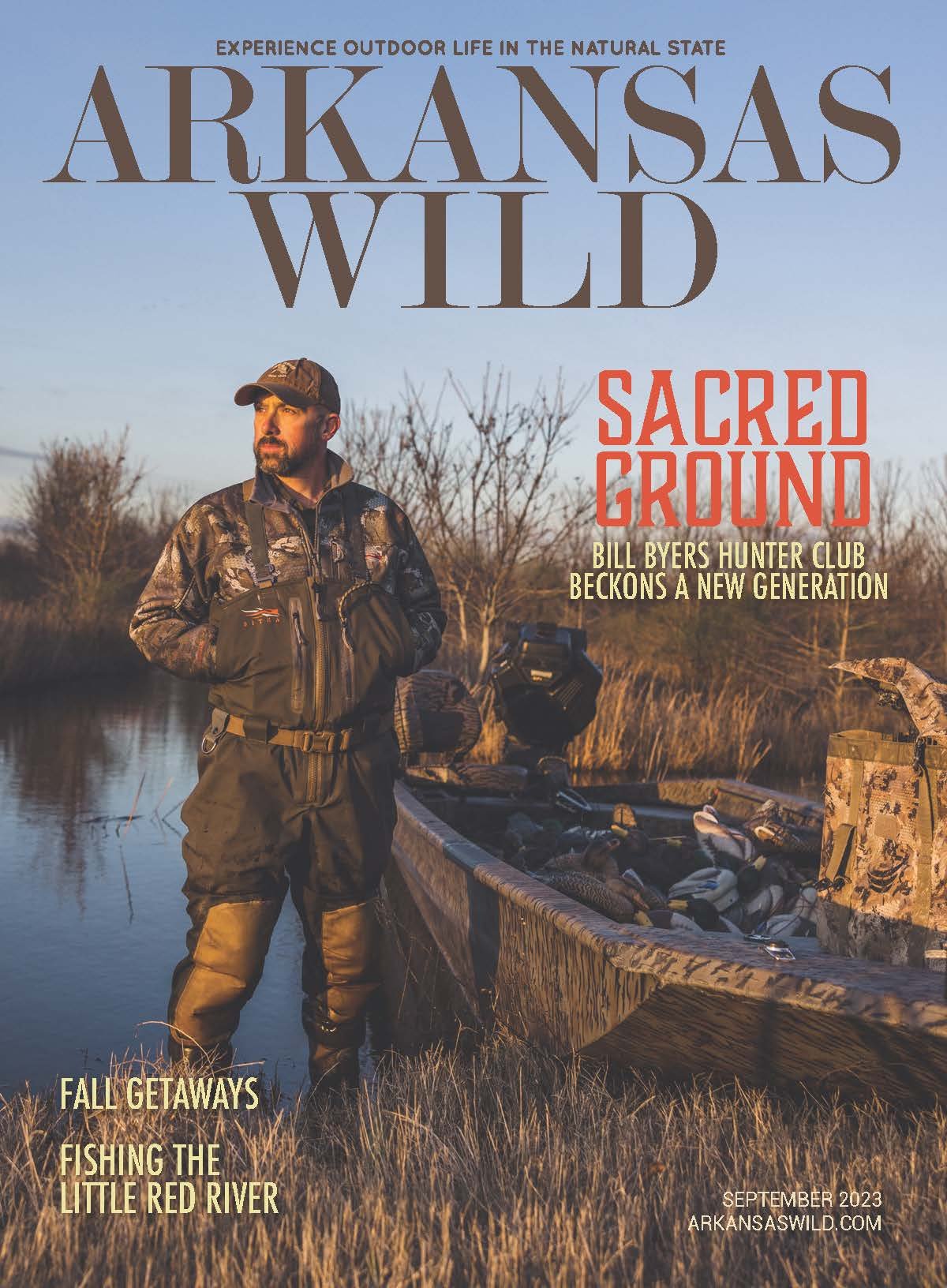Gaston’s guide Frank Saska prepares for a day of fishing on the White River.
When the day began, the only way I knew the sun was up was that the thick blanket of fog rolling in off the White River turned from a deep charcoal gray to a lighter slate color. I stood on the deck of my cabin at Gaston’s White River Resort in Lakeview and watched the swirling mist apprehensively—manager Clint Gaston, whose great-grandfather purchased the land on which the famed trout-fishing resort sits back in 1958, had warned me the night before that winter mornings could be a bit dense, but this was more than I had expected.
As I made my way down to the resort store, I knew there was no way we were going to be able to get out on the water early, something confirmed almost immediately by our guide, Frank Saska. He must have seen the doubt on my face, because he just laughed and told me to have a little patience because the sun would burn everything off within a couple of hours. It was the first of several predictions Frank made that would come true.
Again, Frank must have noticed that I had my doubts about whether I’d have any luck getting some fish, because as we stopped at our first drift spot, he looked me dead in the eye and said, “You will catch fish today.” And again, he proved correct—so correct, in fact, the first time I put my hook in the water I snagged a small rainbow trout. What followed were several hours of catching fish, losing fish, making a series of sometimes-good-sometimes-not-so-good casts and learning about the layout of the
White River from Frank, who after 24 years of guiding fisherman knew exactly where the river went from shallow to deep, and he led us with practiced ease through areas where the trout were just waiting to strike. Even more impressive was Frank’s ability to maintain a calm and humorous demeanor with the novice trout fisherman he had been saddled with—even after the third or fourth time I got my line tangled up.
Within three hours of throwing back that first fish, we had six keepers in live well, enough fish for Frank to transition from guide to cook at the Gaston’s Shore Lunch pavilion, an attractive and secluded riverside area where our feast of fresh trout, fried onions and potatoes, and a bacon-and-bean dish called River Beans would take place. I watched as Frank gutted and filleted the trout with practiced ease, and once that fresh fish came out of the grease, we all fell on it with glee. I’ve eaten a lot of fried fish over the years, but that trout ranks as some of the best ever. And those bacon-laden beans were one of the most excellent side dishes I’ve ever had.
Like many dishes cooked outdoors, those River Beans don’t really have a set recipe, and Frank just chuckled when I asked him for one. But having watched him make these, I know enough to give you an idea of how to recreate them for yourself—and don’t hesitate to put your own spin on these, because this is a dish that lends itself to modification.
The Gaston’s Shore Lunch is a tradition that extends back to the founding of this famous resort, and I can’t think of a better way to end a successful fishing trip. Food eaten outdoors always seems to taste better, but this was above and beyond anything I’d experienced before. For a small taste of this tradition, check out the recipe for Gaston’s River Beans on page 29, just understand that the most important ingredient will be missing: Being there yourself.
Gaston’s River Beans
Serves 4 to 6
Ingredients
½ pound bacon
1 large onion, coarsely chopped
1 large green bell pepper, coarsely chopped
2 large cans baked beans, or pork and beans
2 tablespoons white sugar, brown sugar, honey or molasses (optional)
Salt and pepper to taste
Instructions
In a large cast-iron skillet, fry the bacon until brown and crisp. At Gaston’s, they fry a full pound, serving half of the crispy pork with white bread as an appetizer while the rest of the meal cooks. The Gaston’s version of these beans also leaves the bacon strips whole, but feel free to chop it up if you prefer smaller bites. After the bacon is crisp, add the onions and peppers to the skillet and sauté until the onions become translucent and the peppers get soft. Once the vegetables are cooked through with the bacon, add the pork and beans and your sugar (if using). Simmer for 20 minutes so that all the flavors can meld. Adjust salt and pepper to taste and serve.









